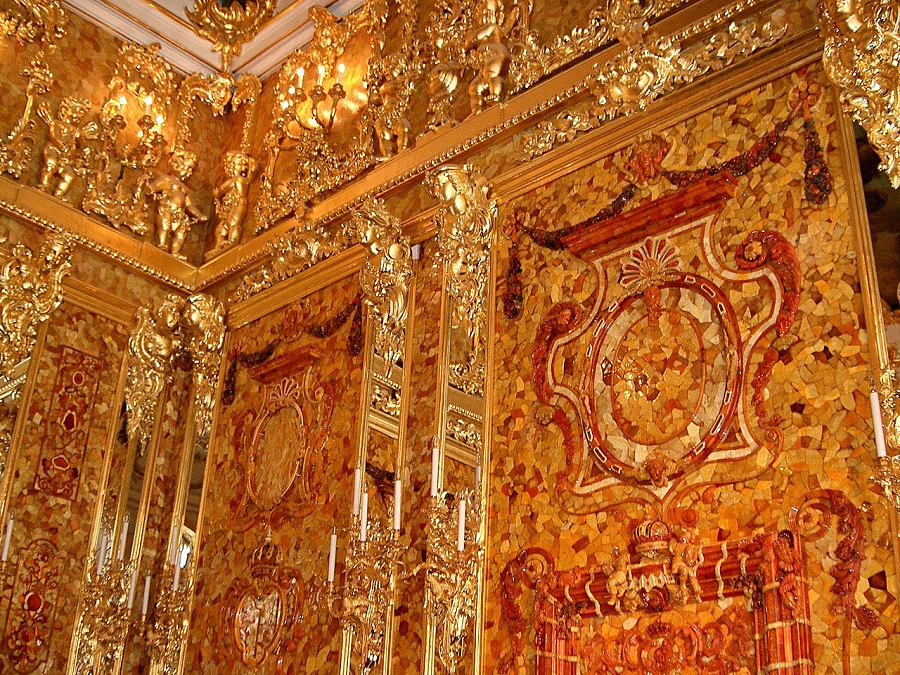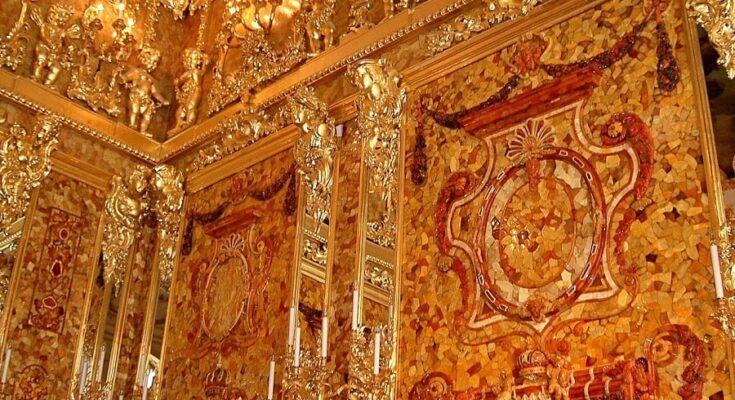
The Amber Road was an ancient route linking northern Europe to the Mediterranean through which amber often referred to as “northern gold” was traded from around 1500 BC to 300 BC.
Amber deposits are still present under the Baltic Sea, where they formed millions of years ago; and in Samland, in the southeast of the Baltic region, this gem washes up on the beach in huge quantities.
Harvested from these shores in the time of the Amber Road, it was traded to areas where it was in short supply, valued for its use in manufacturing adornments, implements, utensils, and even incense.
Amber is fossilized tree resin that has been appreciated for its color and natural beauty since Neolithic times. Much valued from antiquity to the present as a gemstone, amber is made into a variety of decorative objects.
Amber exported through the ancient trade route found in Greece
It has long been used in folk medicine for its purported healing properties. Amber and extracts were used from the time of Hippocrates in ancient Greece for a wide variety of treatments through the Middle Ages and up until the early twentieth century.
The oldest trade in amber started from Sicily. The Sicilian amber trade was directed to Greece, North Africa and Spain. Sicilian amber was also discovered in Mycenae by the archaeologist Heinrich Schliemann, and it appeared in sites in southern Spain and Portugal.
After a decline in the consumption and trade of amber at the beginning of the Bronze Age, around 2000 BC, the influence of Baltic amber gradually took the place of the Sicilian one
The gemstone was transported overland from the Baltic by way of the Vistula and Dnieper rivers to Italy, Greece, and the Black Sea. Other courses included a sea route spanning across the Baltic and North Seas towards Britain, then to the Mediterranean and several other areas, including Egypt and Syria.
It adorned the breast ornament of the Egyptian pharaoh Tutankhamun (c. 1333-1324 BC), was sent to the temple of Apollo at Delphi as an offering, and has been found at Mycenae in Greece and in the Royal Tomb of Qatna in Syria.
In Roman times, the Amber Road took the form that’s most known today. A main route ran vertically south from the Baltic coast in modern-day Lithuania, through modern-day Poland, Czech Republic and Slovakia, to the head of the Adriatic Sea (Aquileia by the modern-day Gulf of Venice) and to Rome.
Other paths branched out from this main route, transporting amber all across Europe and into Asia.
In addition to amber, other valuable goods such as salt, metals, textiles, and exotic items were also traded along the Amber Road.
The trade routes were not limited to just one path; instead, they encompassed a series of interconnected routes, allowing for flexibility depending on political and geographic conditions.
The Amber Road played a significant role in cultural and economic exchanges between different regions of Europe and beyond. It facilitated the spread of ideas, technologies, and cultures, and it contributed to the development of various ancient civilizations



